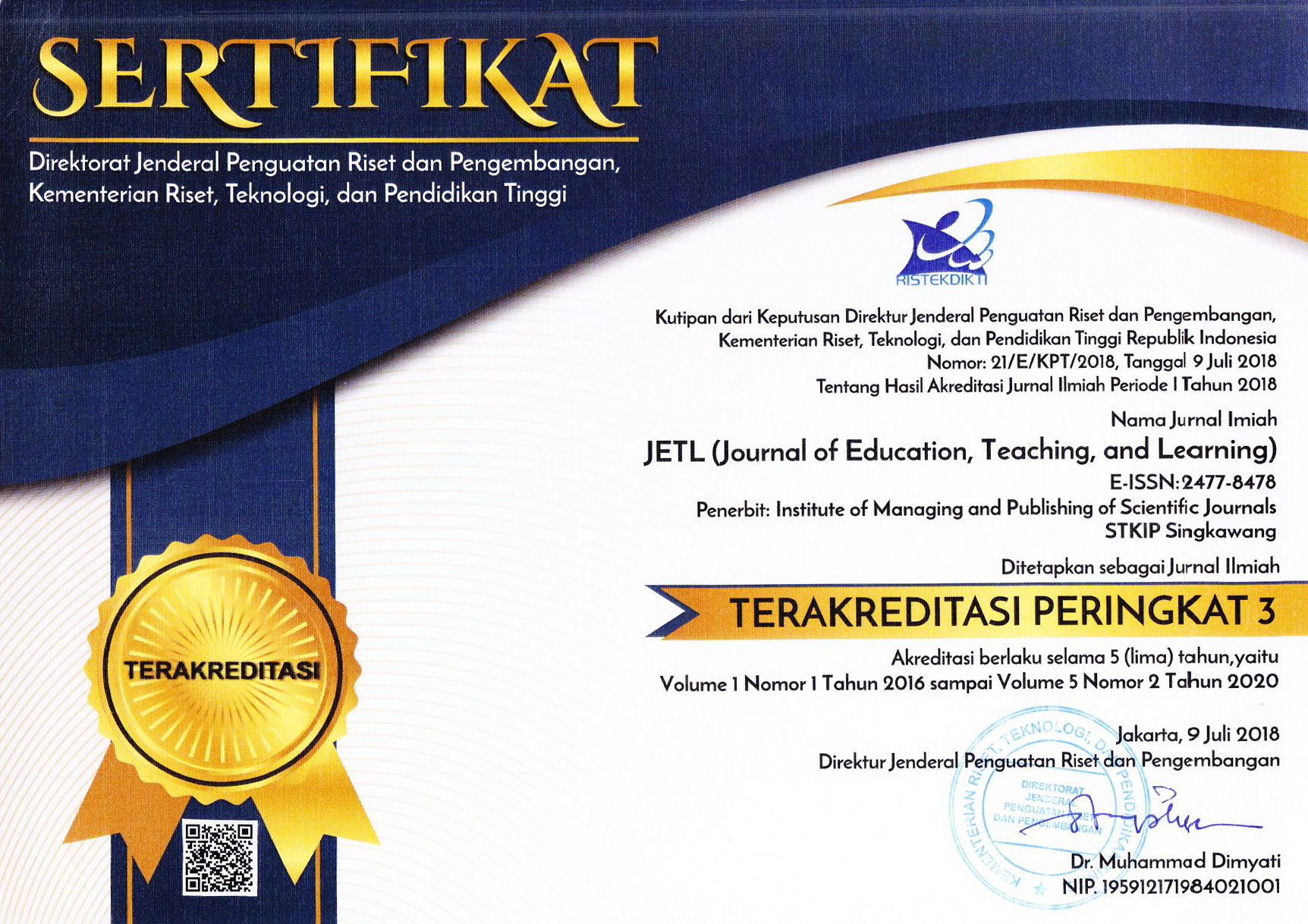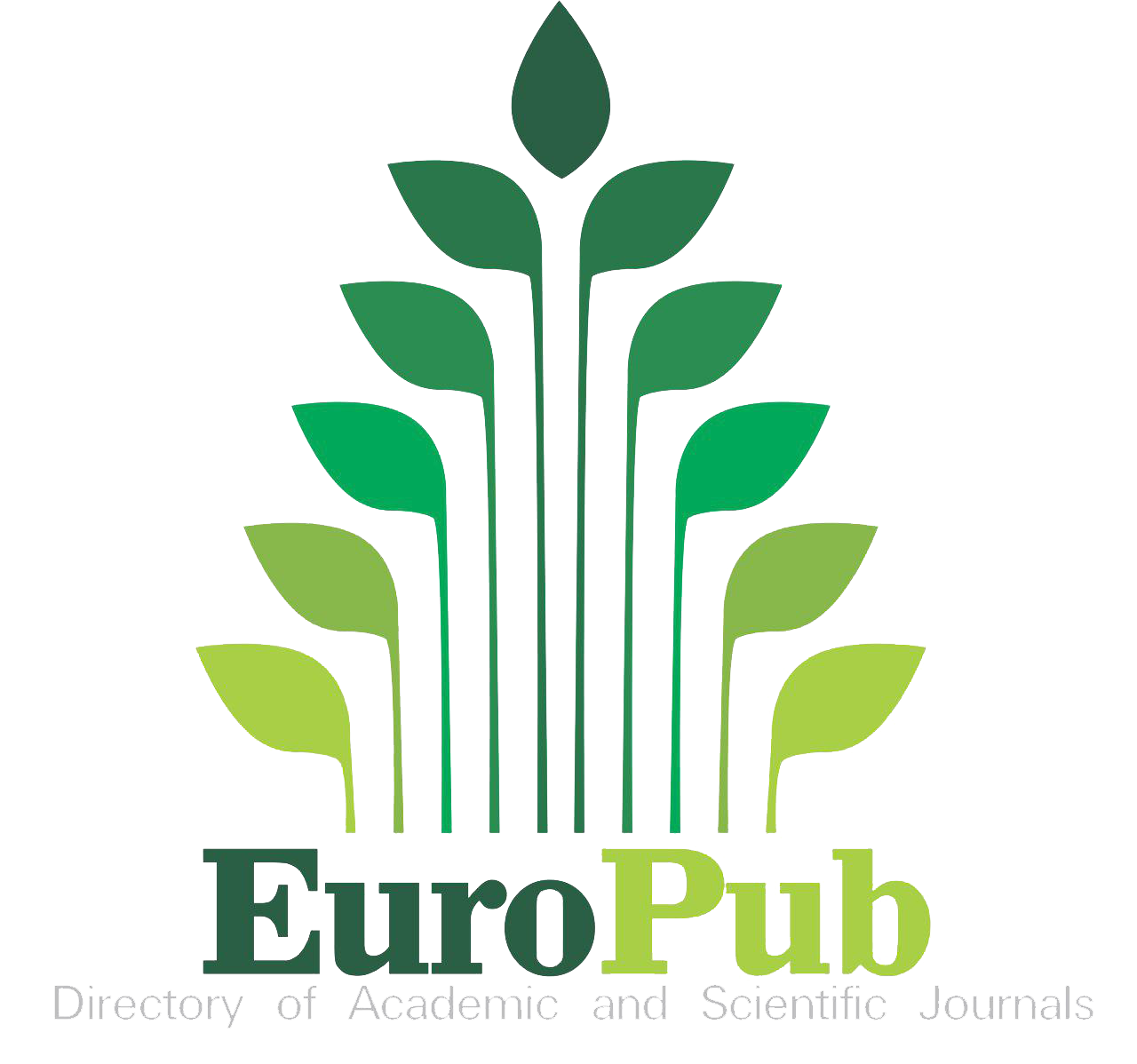Applying Diagnostic Assessment with Rasch Analysis to Measure Students' Basic Understanding of Economics
Abstract
Keywords
Full Text:
PDFReferences
Alagumalai, S., David D. C., Njora H., & John K. (2005). Applied Rasch measurement: an exemplary book: papers in honor of John P. Keeves (1st ed.). Springer.
Anderson, A., & Goode, R. (1997). Assessment informs instruction. Journal of Physical Education, Recreation & Dance, 68(3), 42-49.
Anggraena, Y., Dion G., dan Nisa F. (2022). Pembelajaran dan Asesmen. Badan Standar, Kurikulum, dan Asesmen Pendidikan Kementerian Pendidikan, Kebudayaan, Riset, dan Teknologi.
Aprilia, N. 2021. Dipetik Agustus 25, 2023, Cara Membaca Data Hasil Analisis Rasch Model, Interpretasi Data Output Rasch Model dari URL Video Edukasi Youtube: www.youtube.com/watch?v=ZkK5h3E7pC8.
Arikunto, S. (2016). Prosedur Penelitian Suatu Pendekatan Praktik. PT. Rineka Cipta.
Babbie, E. 2004. The practice of social research. Wadsword.
Badan Standar Kurikulum dan Asesmen Pendidikan. 2022a. Capaian Pembelajaran Mata Pelajaran Ekonomi Fase E - Fase F untuk SMA/MA/program . https://guru.kemdikbud.go.id/kurikulum/referensi-penerapan/capaian-pembelajaran/sd-sma/ekonomi/fase-e/.
Bond, T. G., dan Christine M. F. (2007). Applying the rasch model: Fundamental measurement in the human sciences: Second edition. 1-340. Psychology Press. DOI: 10.4324/9781410614575.
DeJong, G. & Kokinakis, C.L. & Kuntzleman, C. (2002). The role of assessment in meeting the NASPE physical education content standards. Journal of Physical Education Recreation and Dance, 73(7), 22-25.
Falani, I., & Kumala, S.A. (2017). Kestabilan Estimasi Parameter Kemampuan Pada Model Logistik Item Response Theory Ditinjau Dari Panjang Tes. Jurnal SAP (Susunan Artikel Pendidikan), 2(2), 146-150. DOI: http://dx.doi.org/10.30998/sap.v2i2.2028.
Flaig, M. dkk. 2018. Reprint of Conceptual change and knowledge integration as learning processes in higher education: A latent transition analysis. Learning and Individual Differences. Elsevier: 92–104. doi: 10.1016/j.lindif.2018.07.001
Gallo, M. A,. Sheehy, D., Patton K. & Griffin, L. 2006. Assessment Benefits and Barriers, What Are You Committed To?. JOPERD 77 (8). https://files.eric.ed.gov/fulltext/EJ794484.pdf
Hamdi, A. S., & Bahruddin, E. (2014). Metode Penelitian Kuantitatif Aplikasi dalam Pendidikan. CV Budi Utama.
Hammond, L., Burns, D., & Whitebook, M., (2016). Teaching in Low-Income Schools: A Guide for Educational Equity. Teachers College Press.
Laliyo, L.A.R., La Kilo, A., et.all. (2022). Rasch modeling to Evaluate Reasoning Difficulty, Response Change, and Misconception Patterns of Hydrolysis Items. Baltic Journal of Science Education, 21(5), 817-835. DOI: https://doi.org/10.33225/jbse/22.21.817.
Magfirah, R.A. (2019). Pelaksanaan Tes Diagnostik di SMAN 4 Palopo. Tesis. Program Studi Tadris Bahasa Inggris Fakultas Tarbiyah dan Ilmu Keguruan Institut Agama Islam Negeri Palopo.
Nurhidayati, N., & Duryati, D. (2020). Perbedaan Pemahaman Membaca Siswa Sd Di Kota Bukittinggi Ditinjau Dari Jenis Kelamin. Jurnal Riset Psikologi, 1 (1), 1-12. DOI : https://doi.org/10.24036/jrp.v2020i1.8056.
Purnomo, S. (2016). Pengembangan Soal Matematika Model PISA Konten Space And Shape untuk Mengetahui Level Kemampuan Berpikir Tingkat Tinggi. Tesis. Program Studi Magister Pendidikan Matematika Fakultas Keguruan Dan Ilmu Pendidikan Universitas Jember.
Purwanto, Ngalim. 2011. Ilmu Pendidikan Teoritis dan Praktis. Remaja Rosdakarya.
Romine, W. L. & Sadler, T. D. 2016. D. 2016. Measuring Changes in Interest in Science and Technology at the College Level in Response to Two Instructional Interventions. Research in Science Education. Research in Science Education, 46(3):309–32 tion, 46(3):309–327. doi: 10.1007/s11165-014-9452-8.
Saadi, F. Halidjah, S. & Kartono. (2013). Peningkatan Efektivitas Belajar Peserta Didik Dalam Pembelajaran Ilmu Pengetahuan Sosial Menggunakan Media Tepat Guna di Kelas IV Sekolah Dasar Negeri 02 Toho. Jurnal Pendidikan dan Pembelajaran Khatulistiwa (JPPK), 2(7). DOI: http://dx.doi.org/10.26418/jppk.v2i7.2460.
Safri, Hendra. 2018. Pengantar Ilmu Ekonomi. Lembaga Penerbit Kampus IAIN Palopo.
SIMPKB Kemendikbud. 2021. Asesmen Diagnostik : Modul Unit Asesmen. Kementrian Pendidikan dan Kebudayaan.
Schug, M. C., & Wood, W. C. 2011. Teaching economics in troubled times: Theory and practice for secondary social studies. Routledge.
Sudjana, N. (2010). Penilaian Hasil Proses Belajar Mengajar. Remaja Rosdakarya.
Sugiyono. (2013). Metodelogi Penelitian Kuantitatif, Kualitatif Dan R&D. Alfabeta.
Suhermiati, Ita. (2015). Analisis Miskonsepsi Siswa Pada Materi Pokok Sintesis Protein Ditinjau Dari Hasil Belajar Biologi Siswa. Jurnal BioEdu Universitas Negeri Surabaya, 4(3), 985-990.
Sujarweni, V. Wiratna. (2014). Metode Penelitian: Lengkap, Praktis, dan Mudah Dipahami. Pustaka Baru Press.
Sukmadinata, N. S. (2007). Metode Penelitian Pendidikan. PT. Remaja Rosdakarya.
Sulkifli. 2021. The Importance of Understanding Student Character to Support Successful Learning in Junior High School. Jurnal Konsepsi 10 (3), 277-286.
Sumintono, B. dan Widhiarso, W. (2014). Aplikasi model Rasch untuk penelitian ilmu-ilmu sosial (edisi revisi). Trim Komunikata Publishing House.
Sumintono, B. dan Widhiarso, W. (2015). Aplikasi Pemodelan Rasch Pada Assessment Pendidikan. Trim Komunikata Publishing House.
Suparno, Paul. (2013). Miskonsepsi dan Perubahan Konsep dalam Pendidikan Fisika. Grasindo.
Suwarto. (2013). Pengembangan Tes Diagnostik dalam Pembelajaran. Pustaka Pelajar.
Uno, H., Koni, S., 2012. Assesment Pembelajaran. Sinar Grafika Offset.
Wiggins, G. (1993). Assessing student performance: Exploring the purpose and limits of testing. Josey-Bass.
Wiggins, G., McTighe, J. (2005). Understanding by Design. Association for Supervision & Curriculum Development.
Wikasari, A. (2020). Pengaruh Penerapan Model Pembelajaran Elpsa Terhadap Pemahaman Konsep Matematika Siswa Kelas VIII SMP Negeri 4 Denpasar. Skripsi. Universitas Pendidikan Ganesha.
Williams, B., (2010). Closing the Achievement Gap: A Vision for Changing Beliefs and Practices. Teachers College Press.
Yansa, H. dan Retnawati, H. (2021). Identifikasi Praktik dan Hambatan Guru dalam Asesmen Kognitif Matematika di Masa Pandemi COVID-19. Jurnal Elemen, 7 (1), 84 - 97. DOI: 10.29408/jel.v7i1.2585.
Yumitasari, D. (2018). Pengaruh Pelaksanaan Manajemen Kelas Study Groups Terhadap Pemahaman Siswa Pada Mata Pelajaran Ekonomi Di Sekolah Menengah Atas Negeri 12 Pekanbaru. Skripsi, Universitas Islam Negeri Sultan Syarif Kasim Riau.
Zainul, A. & Nasoetion, N. 1997. Penilaian Hasil Belajar. Pusat Antar Universitas, Direktorat Jenderal Pendidikan Tinggi: Departemen Pendidikan Dan kebudayaan.
DOI: http://dx.doi.org/10.26737/jetl.v9i2.5376
Refbacks
- There are currently no refbacks.

This work is licensed under a Creative Commons Attribution-NonCommercial 4.0 International License.
Published by:
Institute of Managing and Publishing of Scientific Journals STKIP Singkawang
Sekolah Tinggi Keguruan dan Ilmu Pendidikan (STKIP) Singkawang
Address : STKIP Singkawang, Jalan STKIP - Kelurahan Naram Singkawang, Kalimantan Barat, INDONESIA, 79251
No. Telp. : +62562 420 0344
No. Fax. : +62562 420 0584
JETL (Journal of Education, Teaching, and Learning)
e-ISSN : 2477-8478
p-ISSN : 2477-5924

Editor in Chief Contact: [email protected] / Wa: +6282142072788
Publisher Contact: [email protected] / Wa: +6282142072788
Management Tools
JETL Indexed by:
JETL (Journal of Education, Teaching, and Learning) is licensed under a Creative Commons Attribution-NonCommercial 4.0 International License.











